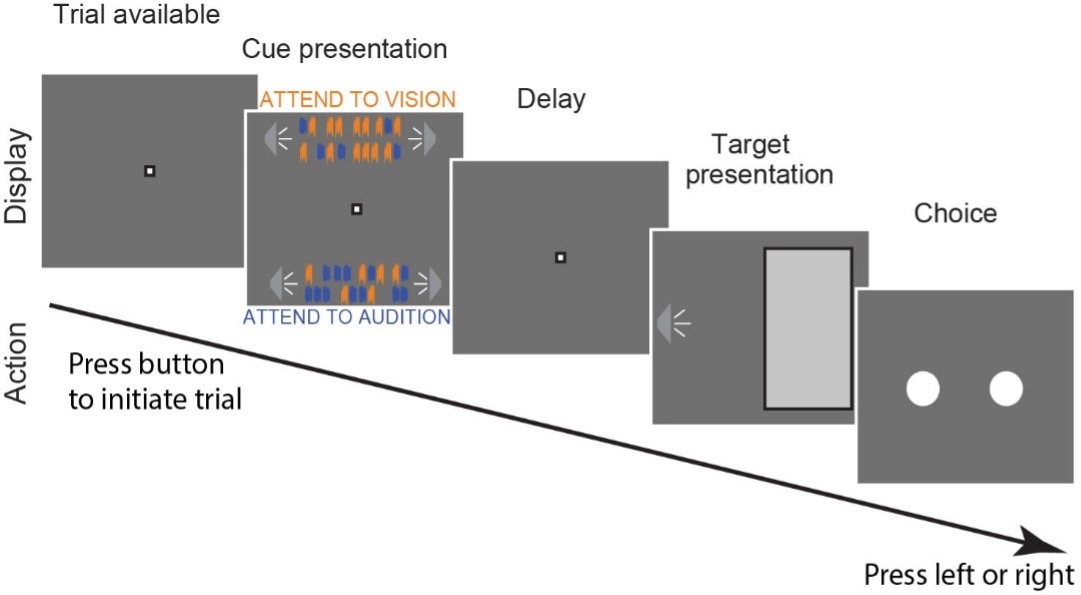Halassa Lab
Project 5
Thalamocortical network contributions to executive dysfunction in Schizophrenia
Executive function deficits are prominent in schizophrenia, are not well controlled by medications, and contribute to general psychosocial functioning. Mapping executive function deficits to brain abnormalities has been a focus of research in schizophrenia, yet progress in this area has been slow. This is in part because of the diversity of executive function deficits observed, and the difficulty of developing tasks that map well to underlying neural circuitry and are applicable in clinical populations. This challenge may be addressed by building a mechanistic framework to link specific ‘latent’ cognitive processes with the neural systems most closely responsible for their underlying computations. Identifying these latent processes, linking them to specific executive functions, and correlating them with computationally-inspired brain-based metrics may be a viable first step.
A series of recent basic and clinical discoveries involving the thalamus and its interactions with the PFC provide an opportunity to build this type of circuit-informed mechanistic model for executive dysfunction in schizophrenia. Dorsolateral prefrontal cortex (dlPFC) deficits have been linked to executive dysfunction in schizophrenia, in line with the basic science literature that supports its role in processing complex inputs to regulate downstream sensorimotor systems. The mediodorsal thalamus (MD), the largest thalamic input to the PFC, is essential for configuring and switching PFC dynamics based on variations in task demands and changes in contingencies within the environment. Perceptual uncertainty has been shown to drive MD BOLD responses in human participants performing decision-making tasks. Perceptual uncertainty is also at the heart of many predictive processing accounts of schizophrenia and may be related to hallucinatory experiences in this population.
Capitalizing on recent developments in animal circuit studies, we developed a human task probing uncertainty in decision-making that is predicted to engage the dlPFC and its interactions with the mediodorsal (MD) thalamus. Using this task, we seek to identify specific behavioral deficits in schizophrenia patients that can be linked with the known circuit mechanisms that underlie them. A goal of this project is to use basic neuroscience circuit investigations to inform the development of clinically relevant neuroimaging markers, with a view towards developing translational biomarkers for executive dysfunction in schizophrenia. This work is done in collaboration with Neil Woodwards group at Vanderbilt University and led by Anna Huang.

Address
Tufts University School of Medicine
Neuroscience Department
136 Harrison Ave., Boston, MA 02111
Accessibility
Tufts is committed to providing an environment that is accessible to individuals with disabilities.
You Are Welcome Here
Halassa Lab is committed to creating a diverse environment. All qualified applicants will receive consideration for employment without regard to race, color, religion, gender, gender identity or expression, sexual orientation, national origin, genetics, disability, age, or veteran status.
